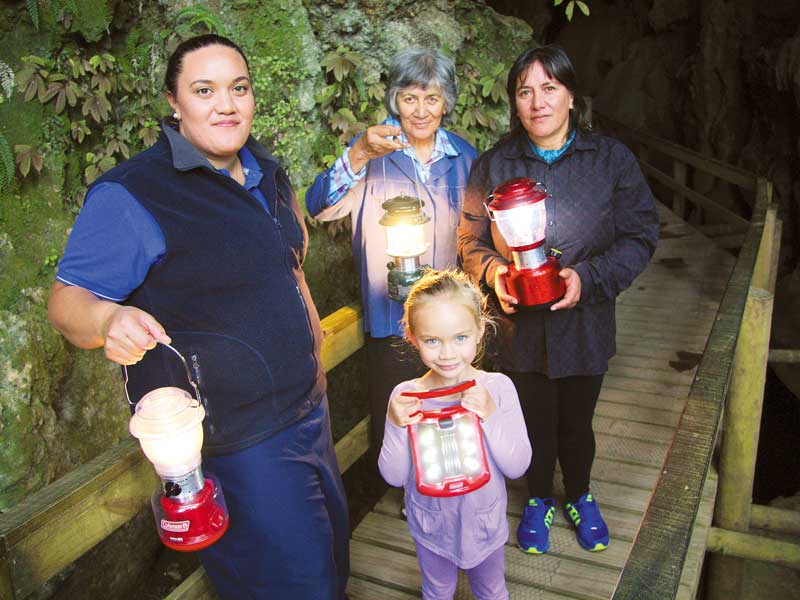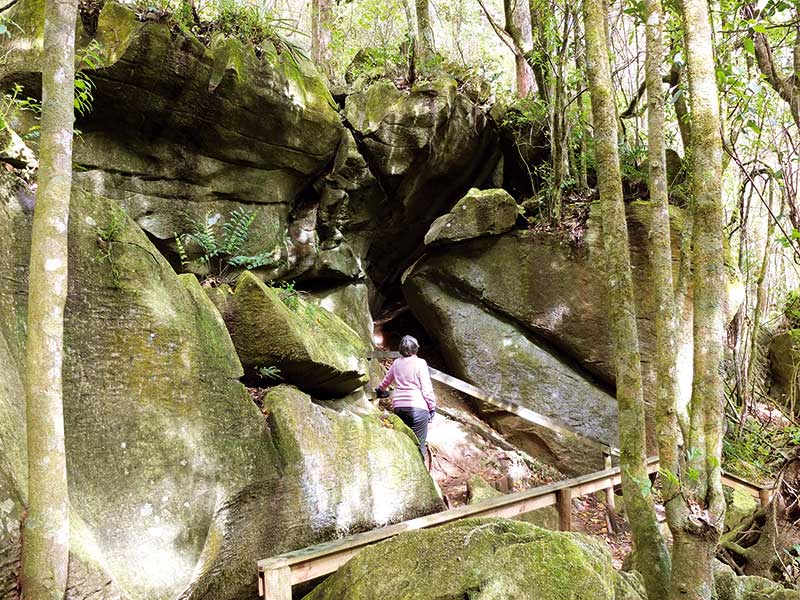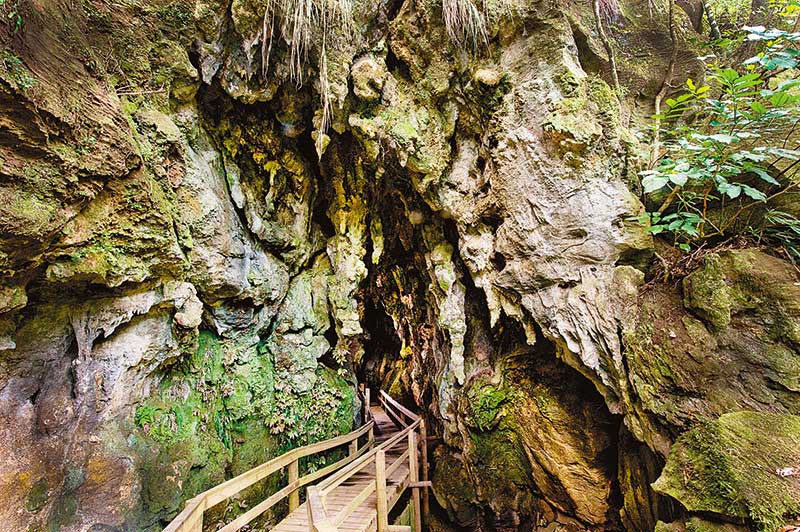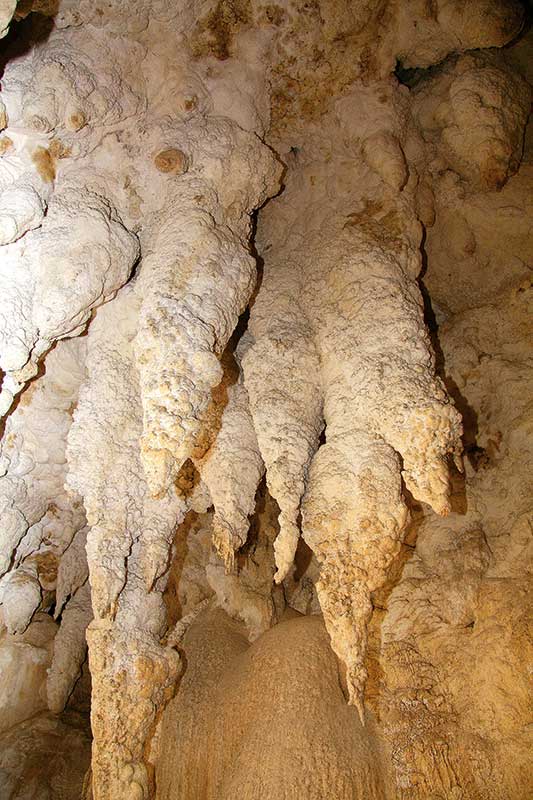Five kilometres south of Kawakawa on SH1, a sign points the curious down an unsealed road that rattles the teacups but only lasts a kilometre. Next to the parking area is a small hut and ticket office. It was deserted but a clock on the door indicated that the next tour would leave at 12pm. It was ten past and I agitated that we’d missed it.
“Relax,” said my friend, who’s a local. You’re on Northland time.”
Sure enough, a few minutes later, a young girl carrying a lantern emerged from the cave entrance.
“Well, hello,” she said cheerfully. “You wanting a tour?” Te Paihere was a relaxed and charming guide.
“I am the great-granddaughter of Te Tawai Kawiti,” she told me. “He began taking people through the caves in the 1950s. He had a great knowledge, some of which he passed on to the guides that followed him – his daughter Kene, his granddaughter Ariana, and now me.”
With the lamp held high, Te Paihere led the two of us into the depths of this extraordinary subterranean world and we wended our way in the dripping silence past lime-drizzled pillars, deep caverns, great rumps of white limestone rock, crystallised curtains and bulging stalactites, some of them an estimated four million years in the making. We followed the course of a stream that sometimes murmured from the depths and occasionally rose to the floor of the cave. At these points, Te Paihere paused and turned off the lamp to slowly reveal the star-studded ceiling lending faint light to the eerie blackness above us.
“Glow worms live near water,” she said. “And the hungrier they are, the brighter their backsides shine.”
We managed to glimpse their sticky, single-strand webs hanging down like beads from the ceiling – beautiful to see but lethal for wandering insects.
The cave tour took about 30 minutes and then Te Paihere directed us to the return walk, above ground over the roof of the caves. A well-formed path led through a striking patch of native forest that wove around giant limestone rocks. Carved by the elements into bizarre shapes, they form a natural sculpture park that was almost as fascinating as the caves’ interior. My camera went into overdrive.
Jill Malcolm is a former editor of Motorhomes Caravans & Destinations and author of the Great Kiwi Motorhome Guide.

The best mountain walks in Rotorua and Taupō
Nestled in the heart of Aotearoa NZ’s North Island, the Rotorua and Taupō regions are a haven for avid walkers and outdoor enthusiasts alike









